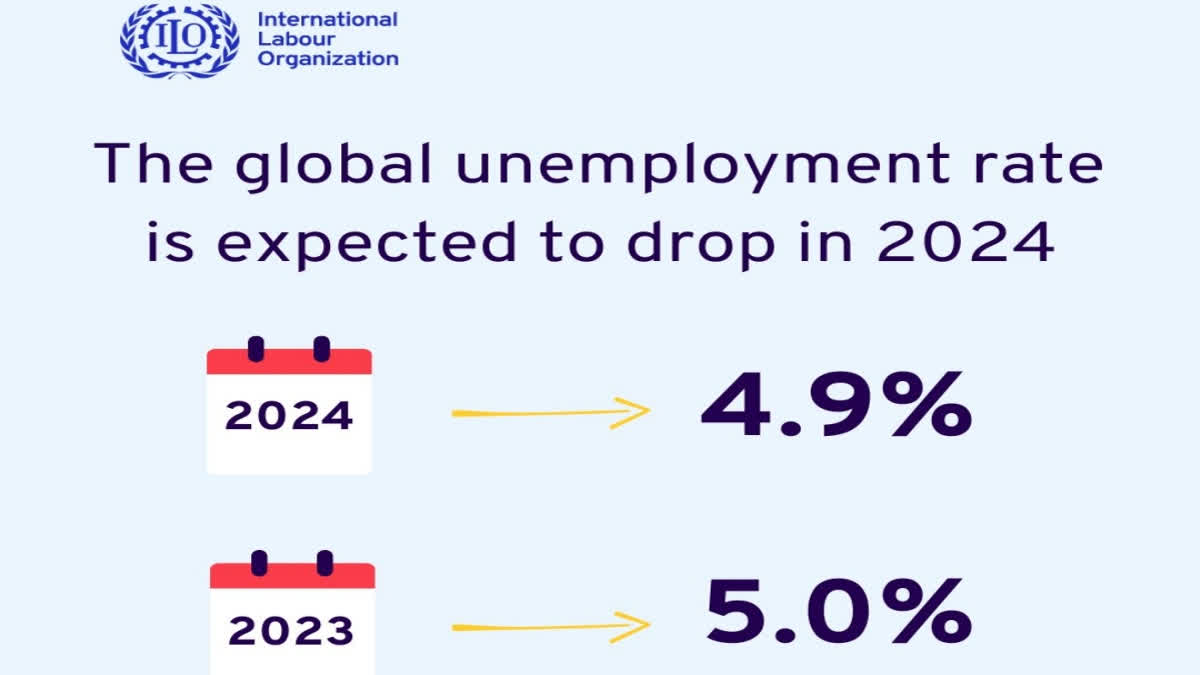Geneva: New projections indicate that global unemployment will fall modestly this year even as inequalities in labour markets persist, with women in low-income countries particularly affected, according to a new International Labour Organization (ILO) report.
The ILO’s World Employment and Social Outlook: May 2024 Update predicts that the 2024 global unemployment rate will stand at 4.9 per cent, down from 5.0 per cent in 2023. The figure revises downward the previous ILO projection of 5.2 per cent for this year. However, the downward trend for joblessness is expected to flatten in 2025, with unemployment remaining at 4.9 per cent, the report says.
Despite this outlook, the report underscores a persistent lack of employment opportunities. The ILO estimates that the ‘jobs gap’ - which measures the number of persons without a job but who want to work - stands at 402 million persons in 2024. This includes 183 million people who are counted as unemployed.
"Today’s report reveals critical employment challenges that we must still address. Despite our efforts to reduce global inequalities, the labour market remains an uneven playing field, especially for women," said ILO Director-General, Gilbert F. Houngbo. "To achieve a sustainable recovery whose benefits are shared by all, we must work towards inclusive policies that take into consideration the needs of all workers. We must place inclusion and social justice at the core of our policies and institutions. Unless we do we will fall short of our objective to ensure strong and inclusive development."
Detailed figures from the report show that women, especially in low-income countries, are disproportionately affected by the lack of opportunities. The jobs gap for women in low-income countries reaches a striking 22.8 per cent, versus 15.3 per cent for men. This contrasts with high-income countries, where the rate is 9.7 per cent for women and 7.3 per cent for men.
These differences are just the “tip of the iceberg”, as significantly more women than men are completely detached from the labour market. The report finds that family responsibilities can explain much of the difference seen in women’s and men’s employment rates. Globally, 45.6 per cent of working-age women are employed in 2024, compared to 69.2 per cent of men.
Even when women are employed, they tend to earn far less than men, particularly in low-income countries. While women in high-income countries earn seventy-three cents compared to a dollar earned by men, this figure drops to just forty-four cents in low-income countries.
More generally, despite the adoption of the 2030 Agenda for Sustainable Development in 2015, progress in reducing poverty and informality has slowed down in comparison to the previous decade. The number of workers in informal employment has grown from approximately 1.7 billion in 2005 to 2.0 billion in 2024. To achieve the Sustainable Development Goals, "a comprehensive approach" to reducing poverty and inequality is urgently needed, the report concludes.
Read More



